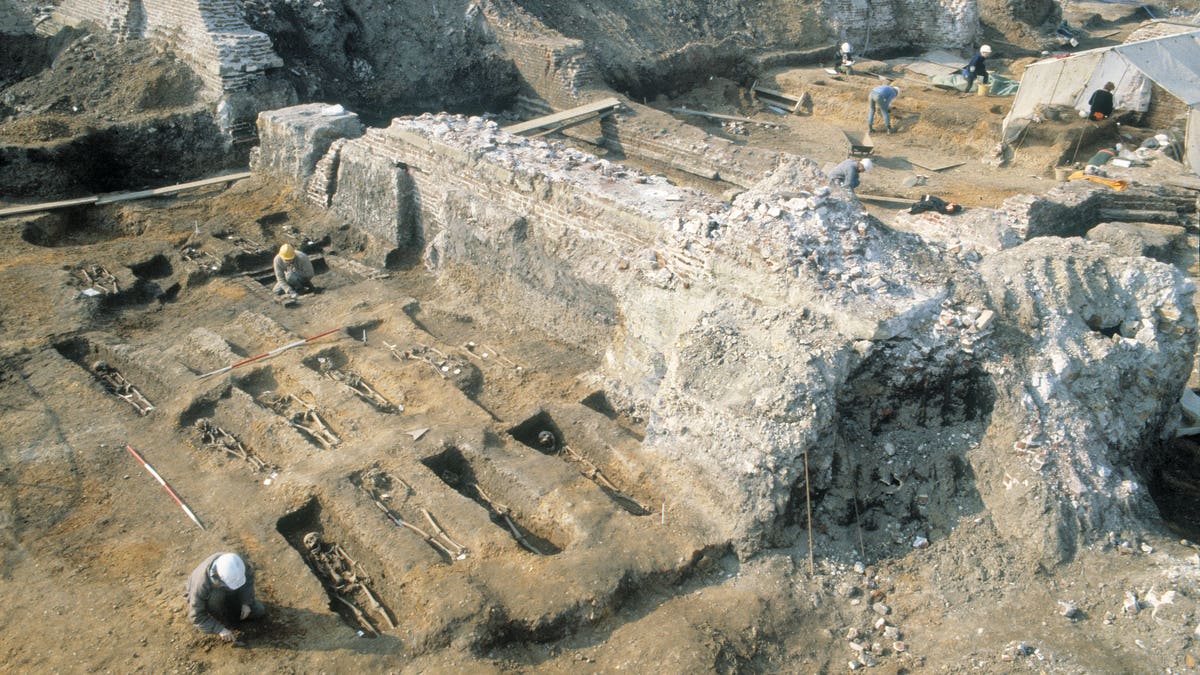Illinois virus outbreak linked to $1-burrito event for Northwestern University students, health department says
The restaurant says it is cooperating in the investigation.
A new study revealed that Black women of African descent were the most likely to die during a devastating medieval plague.
Research of 145 bodies that were examined from three different London cemeteries found that there was a higher proportion of female people of color in plague burials compared to non-plague burials, according to the results of a Museum of London Study that was first published by the BBC.
"There is a significantly higher proportion of people of estimated African affiliation in the plague burials compared to the nonplague burials (18.4% vs. 8.3%)," the study reads. "For the female-only sample, individuals of estimated African population affinity have a significantly higher estimated hazard of dying of plague compared to those with estimated white European affinity. There are no significant associations for any of the other comparisons."
Researchers used data on bone and dental changes of the 145 people studied, using a forensic anthropological toolkit to determine whether bones were likely to have come from someone with African heritage.
THE BUBONIC PLAGUE INFLUENCED EVOLUTION OF THE HUMAN IMMUNE SYSTEM, NEW STUDY SUGGESTS

This view shows the excavation of the Black Death cemetery at the Royal Mint site in East Smithfield, London. (MOLA/Getty Images)
But the study is also careful to note the small sample size of the study and stresses it was careful to avoid "the incorrect and harmful implication that there is a biological basis of race and we actively oppose the incorrect inference that there is something inherent to people assigned to a certain racial category that makes them more vulnerable to disease."
"Instead, we emphasize here that variation by race in susceptibility to and hazard of dying from disease reflects the biological and psychosocial effects of racism, which was present in the medieval world (Heng 2018a); race is a social classification and is not based in biological reality, but it does have biological consequences," the author's note.
The medieval plague, often referred to as the "Black Death," was an outbreak of disease across Asia and Europe that killed millions of people between 1348 and 1350.
While it is estimated that roughly 35,000 people in London died of the plague, the likelihood of death was greater for people already facing significant hardship, the study noted, arguing that part of the higher death rate for people of color was the result of the "devastating effects" of "premodern structural racism" during the time period of the plague.

This view shows the excavation of the Black Death cemetery at the Royal Mint site in East Smithfield, London. (MOLA/Getty Images)
The paper notes that roughly 18,000 foreigners that moved to London from various locations between 1336 and 1584, something that could have potentially caused social and religious divisions among the city's population.
Dr. Joseph Hefner, an associate professor of anthropology at Michigan State University, told the BBC that the new study reveals previously unknown facts about London's diverse population during the period.
"This research takes the deep dive into previous thinking about population diversity in medieval England based on primary sources," Hefner said. "Combining bioarchaeological method and theory with forensic anthropological methods permits a more nuanced analysis of this very important data."

This view shows a Black Death burial trench under excavation between rows of individual graves (and the later concrete foundations of the Royal Mint) in East Smithfield, London. (MOLA/Getty Images)
Meanwhile, Dr. Rebecca Redfern of the Museum of London drew parallels to the results of the study and the current conditions lived by people of color today.
CLICK HERE TO GET THE FOX NEWS APP
"We have no primary written sources from people of color and those of Black African descent during the great pestilence of the 14th century, so archaeological research is essential to understanding more about their lives and experiences," Redfern said. "As with the recent COVID-19 pandemic, social and economic environment played a significant role in people's health and this is most likely why we find more people of color and those of black African descent in plague burials."


